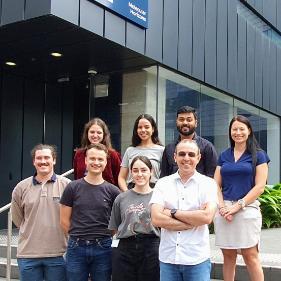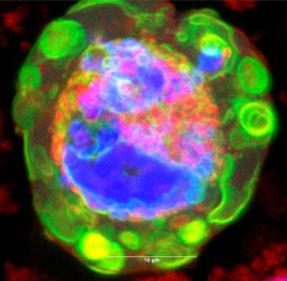The Tolun group studies the bio-nano-machines carrying out processes involving nucleic acids such as DNA recombination, replication, repair and RNA transcription. We use molecular imaging (electron microscopy), structural biology (Cryo-EM), biochemistry and molecular biology.

The main technique utilised in my group is electron microscopy (EM). In addition to the state-of-the-art cryo-EM, we also use the classical EM techniques such as shadow-casting (i.e., metal shadowing) and negative staining. Shadow-casting is a technique ideally suited for visualising DNA and DNA-protein complexes at the single-molecule level.
DNA Recombination
Single strand annealing homologous DNA recombination (SSA) is a process found in virtually all life. It is particularly important in the double-strand DNA (dsDNA) viruses, such as the oncogenic viruses Epstein-Barr Virus (EBV) Kaposi's sarcoma-associated herpesvirus (KSHV), and Herpes Simplex Virus 1 (HSV-1). SSA is catalysed by a protein complex called a two-component recombinase (TCR), composed of an exonuclease and an annealase. The exonuclease generates a single-strand DNA (ssDNA) overhang, and the annealase binds to this nascent ssDNA and anneals it to a homologous ssDNA strand.
My research group is using a multi-disciplinary approach to better understand how this machinery works, with a focus on cryo-EM. We are interested in determining the structures of proteins and protein complexes involved in SSA, using cryo-EM.
DNA Replication
In collaboration with the research groups of Nick Dixon, Antoine van Oijen, and Aaron Oakley, we are studying DNA replication to better understand the molecular mechanistic details of this process.
Collaborations
We are a very collaborative group, and in addition to our main interests above, we also work on many collaboration projects to determine the cryo-EM structures of proteins or complexes from other systems. Some of the topics we are working on with our collaborators include transcription, snake venom toxins and chaperons.
View Dr Gökhan Tolun's Scholars page
Contact gokhan_tolun@uow.edu.au for more information
